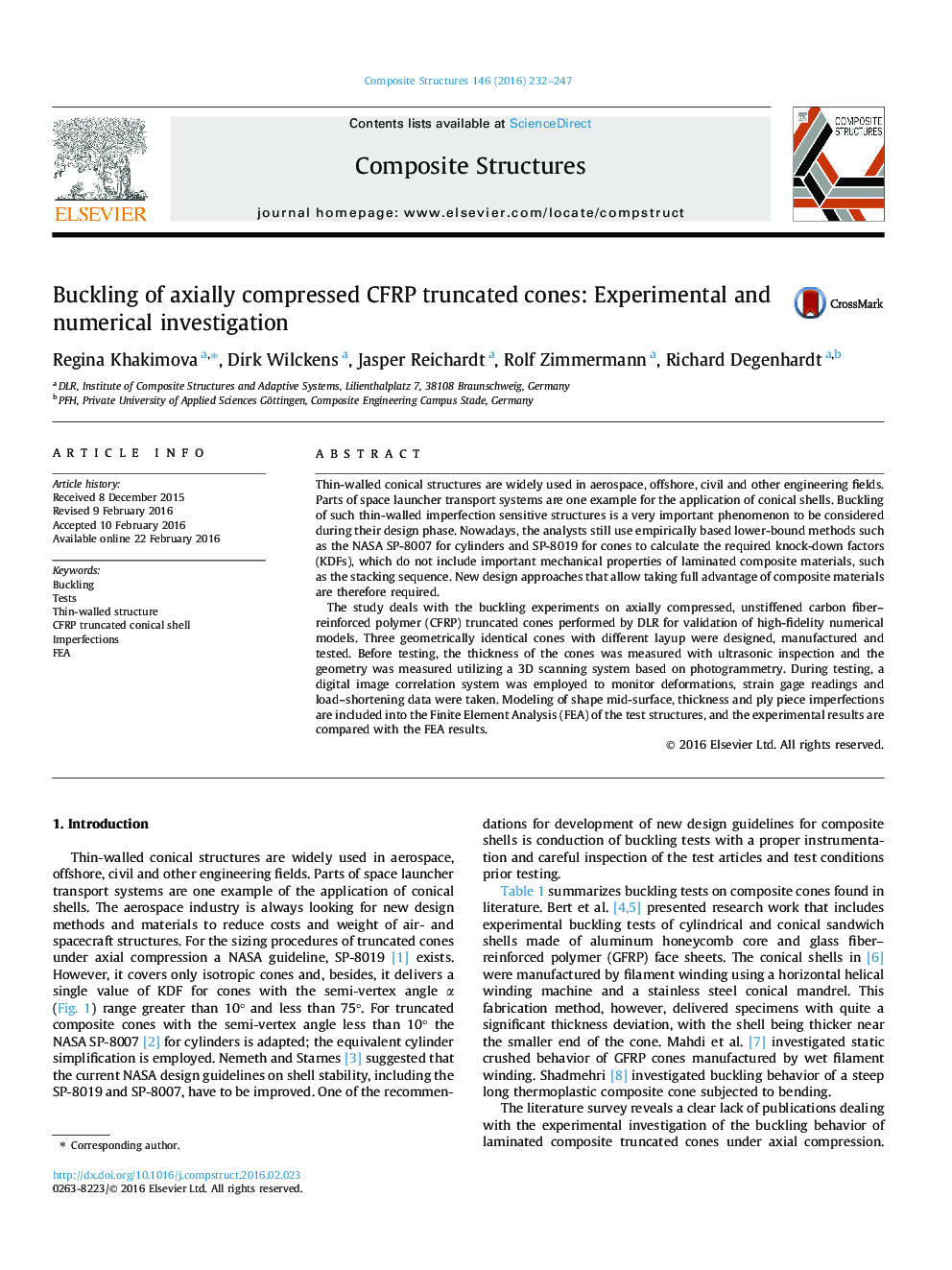| Article ID | Journal | Published Year | Pages | File Type |
|---|---|---|---|---|
| 250886 | Composite Structures | 2016 | 16 Pages |
Thin-walled conical structures are widely used in aerospace, offshore, civil and other engineering fields. Parts of space launcher transport systems are one example for the application of conical shells. Buckling of such thin-walled imperfection sensitive structures is a very important phenomenon to be considered during their design phase. Nowadays, the analysts still use empirically based lower-bound methods such as the NASA SP-8007 for cylinders and SP-8019 for cones to calculate the required knock-down factors (KDFs), which do not include important mechanical properties of laminated composite materials, such as the stacking sequence. New design approaches that allow taking full advantage of composite materials are therefore required.The study deals with the buckling experiments on axially compressed, unstiffened carbon fiber–reinforced polymer (CFRP) truncated cones performed by DLR for validation of high-fidelity numerical models. Three geometrically identical cones with different layup were designed, manufactured and tested. Before testing, the thickness of the cones was measured with ultrasonic inspection and the geometry was measured utilizing a 3D scanning system based on photogrammetry. During testing, a digital image correlation system was employed to monitor deformations, strain gage readings and load–shortening data were taken. Modeling of shape mid-surface, thickness and ply piece imperfections are included into the Finite Element Analysis (FEA) of the test structures, and the experimental results are compared with the FEA results.
